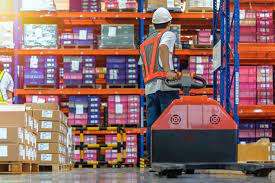E-commerce shows no signs of slowing down. Its meteoric rise from a $1.5 trillion industry in 2015 to a $4.8 trillion juggernaut in 2021 is no blip on the commercial radar; consumers will continue to buy goods online as long as service is brisk and delivery convenient. And as a direct result, competition among online retailers is fierce. Retailers are looking at novel ways to improve last-mile delivery speed, logistics, and customer experience to differentiate themselves from the competition such as micro-fulfillment centers.
If you’re an online retailer or simply an interested party, chances are you’ve come across the term before. But what exactly are micro-fulfillment centers, how do they benefit businesses, and how does an entrepreneur utilize one?
Let’s start with the basics. The single most common question curious business owners ask is, “what are they?”.
Micro-fulfillment centers are small-scale warehouse facilities situated in dense urban areas close to consumers. As a strategy, micro-fulfillment essentially tries to replicate an ideal combination of local in-store shopping and delivery. The fulfillment centers are localized and close to consumers, which makes them as quick and efficient as popping down to a neighborhood store. But they are purpose-built for delivery and pick-up, making them a convenient alternative to in-store shopping.
E-commerce retailers facing “last-mile” issues – that is, how to get their product into the hands of customers as quickly as possible – should consider partnering with companies that offer micro-fulfillment solutions.
REEF is one example. They operate a network of hyper-local logistics hubs located in high-demand neighborhoods that allow retailers to deliver their products in record time, boosting customer satisfaction and establishing brand loyalty.
Moreover, REEF’s micro-fulfillment solutions handle every aspect of the fulfillment (from pick-and-pack to inventory management and last-mile delivery), allowing retailers to focus on core competencies.
Increasingly, businesses are looking to lessen their carbon footprint, both as a demonstration of core values and as a means for ensuring a better future.
Because micro-fulfillment centers are usually localized in busy communities, often utilizing zero-emission vehicles, retailers can breathe easy (and advertise their environmental commitment freely), knowing they are not adding to traffic congestion and transport truck emissions.
If you want to reap the benefits of operating through micro-fulfillment centers, your best bet is to join an existing logistics network. And if you’re looking to a logistics network for opportunities, your best bet is to choose one with a wide-reaching, hyper-local network. Hopefully, this article has demystified micro-fulfillment for any curious reader out there. In summary, micro-fulfillment centers are convenient, low-investment ways for online retailers to stand out among the competition. To utilize micro-fulfillment centers, team up with a globally-reaching, hyper-local logistics network.
Source : https://www.mikegingerich.com/blog/faqs-about-micro-fulfillment-centers-answered/









